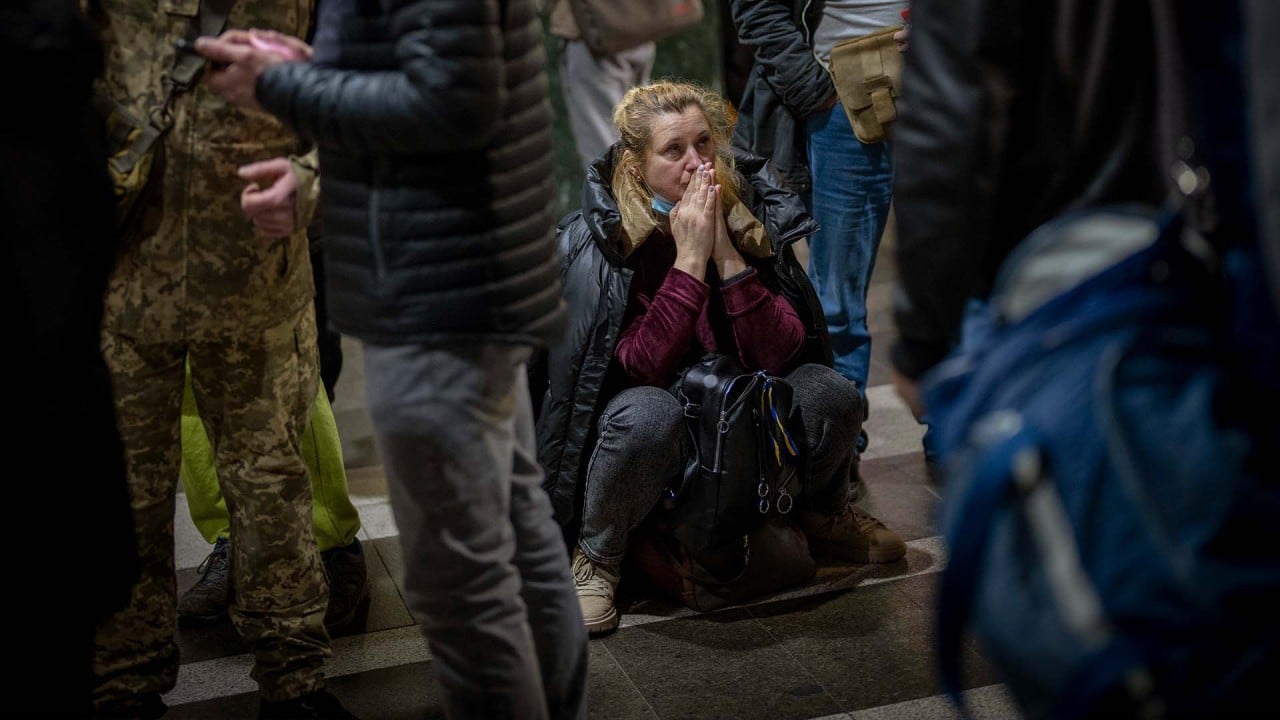
Why a military offensive against Ukraine was always Russia’s Plan B
- To stop Nato’s eastward expansion, Putin has been prepared to risk international condemnation and possible domestic repercussions
- His rationale of the need to protect the country’s security also has the support of a sizeable number of the Russian people
John Mearsheimer wrote in 2014 that the Ukraine crisis is the West’s fault originating from its “misbegotten policy” of turning Ukraine into a Western stronghold, while Jeffrey Sachs has called “American intransigence” on Nato enlargement “misguided and risky”. In each of his three televised addresses so far, Putin has stressed that Moscow would not tolerate Nato’s eastward enlargement, threatening Russia and subsequently his own rule, deemed autocratic in the West.
In retrospect, it seems clear that the military option was always Plan B. Russia’s “red line” was Ukraine joining Nato, which Putin said would allow a missile to reach Russia in as little as five minutes. In fact, this is already possible from Estonia.
However, the more important motive might be to prevent Nato from launching a full-scale ground operation along Russia’s border with Ukraine, which is the largest part of the Russian westward frontier.

Russia was juggling offence and negotiation, though also betting on Ukraine to blink first in the face of the massive build-up. As recently as February 14, Moscow signalled its readiness to continue negotiations with the West. Four days later, it announced a partial withdrawal of troops. However, neither move worked. Washington unwearyingly advocated for Nato’s “open door policy” and kept pushing on with sanctions.
Another concern, cited by Putin, was the US’ ongoing weaponisation of Ukraine. As The Wall Street Journal reported, since January, the US has dispatched eight cargo planes with 650 tons of arms and equipment to Ukraine; since 2014 Washington has provided US$2.7 billion in aid to Kyiv.
The turning point came on February 19, when President Volodymyr Zelensky threatened to renounce Ukraine’s non-nuclear status. Russia believes that Zelensky is incapable of controlling Ukraine’s volunteer battalions and is wary of nuclear technology falling into their hands.
The grand narrative driving Putin’s vision for Russia and Ukraine
The final straw for Putin came the next day, after a futile call with French President Emmanuel Macron convinced him a compromise would not be possible.
The recognition of Donetsk and Luhansk became possible due to Russia’s proactive approach. This Donbas region of eastern Ukraine has seen conflict for eight years, and Moscow has issued 800,000 Russian passports to locals, with 400,000 applications still being processed. This effectively turned a sizeable chunk of the region’s population of around 3.5 million into Russian citizens.

And Putin’s rationale resonates with the electorate. According to Russian state opinion pollster VTsIOM, 73 per cent of Russians support the recognition of the independence of Donetsk and Luhansk, while the independent Levada-Center puts the figure at 45 per cent. Last year, another Levada-Center survey showed 66 per cent of Russians blaming the US and Ukraine for escalation of the crisis in Donbas.
Hence, a wave of patriotism could help the Kremlin shape the public mood in the run-up to Russia’s 2024 presidential election. After Crimea rejoined Russia in 2014, the pro-Putin United Russia party overwhelmingly dominated the 2016 legislative election.
The US and its allies have responded with “severe” sanctions aimed at crippling the Russian economy and cutting it out of global trade. Already, the pandemic-stricken Russian economy is suffering inflation of 8.4 per cent, a six-year high.
And even though China is walking a tightrope between the US, Russia and Ukraine, Putin’s “old friend”, Xi Jinping, may have to be even more prudent now. Beijing must have been perplexed to learn that just days after the Chinese supported the Minsk Agreements as a way out of the Ukraine crisis, Moscow effectively scrapped them by recognising Donetsk and Luhansk.
Danil Bochkov is an expert at the Russian International Affairs Council


